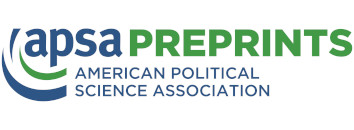Abstract
Inferences about individual campaign contributors are limited by how the Federal Election Commission collects and reports data. Only transactions that exceed a cycle-to-date total of $200 are individually disclosed, so that contributions of many donors are unobserved. We contrast visible and "hidden" donors, i.e., small donors who are invisible due to censoring—and routinely ignored in existing research. We use the Sanders presidential campaign in 2016, whose unique campaign structure received money only through an intermediary/conduit committee. These are governed by stricter disclosure statutes, allowing us to study donors who are normally hidden. For Sanders, there were seven hidden donors for every visible donor, and altogether, hidden donors were responsible for 33.8% of Sanders' campaign funds. We show that hidden donors start giving relatively later, with contributions concentrated around early primaries. We suggest that as presidential campaign strategies change towards wooing smaller donors, more research on what motivates them is necessary.
Supplementary materials
Title
Online Appendices
Description
Online Appendices for Hidden Donors: The Censoring Problem in U.S. Federal Campaign Finance Data
Actions


